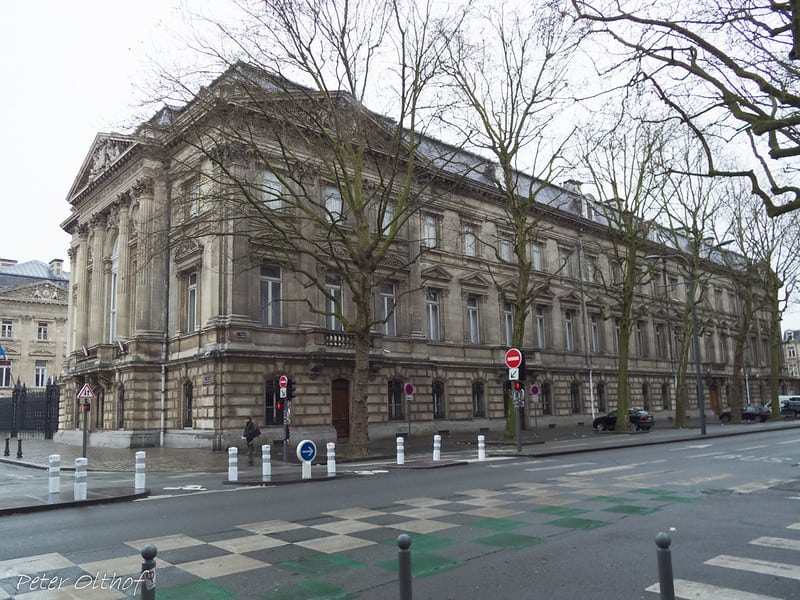When planning a visit to Lille, you must know where to go. Lille is the capital of Hauts-de-France region and borders Belgium. Originally an important center of French Flanders, Lille has a rich history. Its historic center, Vieux Lille, is full of 17th-century brick town houses, cobbled pedestrian streets, and the central square, Grand Place. If you’re visiting Lille, make sure to visit the Old Stock Exchange.
Vieux-Lille
In Lille France, a visit to the Old Stock Exchange, redbrick houses and hip cocktail bars is an excellent idea. This area also has many traditional restaurants with terraces. A visit to Lille is not complete without a stop at the Hospice Comtesse museum housed in a medieval building. Other interesting sights to see in Vieux-Lille include the Porte de Gand monument, Notre-Dame-la-Treille Cathedral and the Birthplace of Charles de Gaulle museum.
During your visit to Vieux-Lille, take a walking tour that will help you learn about the city’s history, architecture, and other interesting facts. A walking tour lasts approximately two hours and highlights many of the city’s landmarks. Tours leave from the Tourist Information Centre (the tourist office) and include a brief history lesson. Afterwards, you can enjoy a delicious meal and a few drinks at some of the many local eateries.
If you have never been to Lille before, this is a great place to start. This historic district was a market place in the eleventh century, but today you’ll find cafes, terraces, and shops here. If you want to enjoy the best of old Lille, this is the place to be. Just be sure to make a reservation for the Old Stock Exchange! It’s well worth the trip!
Palais des Beaux-Arts de Lille
If you’re interested in art, the Palais des Beaux-Arts de La Lille is a must-visit. This municipal museum is devoted to modern art, fine arts, and antiquities. It’s one of France’s largest art museums. But there’s more to the palais than meets the eye. Here are some of its most memorable highlights:
First, the museum’s permanent collection contains some of Europe’s most famous artists. Visitors can view more than 650 works of art in its permanent collection, including two Goyas. These paintings were made between 1818 and 1819, so they’re truly ephemeral works. In addition to permanent works of art, the collection includes works from the Middle Ages, Tachism, and contemporary artists.
Another important feature of the Palais des Beaux-Arts de la Lille is its diverse cultural program. The museum houses works from the 12th to the 20th century, as well as a famous Middle Ages-Renaissance department. Since the museum was renovated in 1997 by the architects Ibos and Vitart, the new structure perfectly combines the modern with the ancient. Visitors can spend hours wandering the museum’s halls.
LaM Lille Metropole Musee d’art moderne
The Lille Métropole Museum of Modern Art (LaM Lille Métropole) is an art museum located in Villeneuve d’Ascq, France. Previously known as the Villeneuve d’Ascq Museum of Modern Art, it houses a diverse collection of contemporary art and sculpture. Founded in 1970, it has exhibited work by artists such as Picasso and Monet.
Located in Villeneuve d’Ascq, a suburb of Lille, the LaM boasts a comprehensive modern art collection, with major works by Georges Braque, Andre Derain, Henri Laurens, and Joan Miro. More than 1 000 contemporary works are on view at the museum, and the artists represented include Lewis Baltz, Alighiero Boetti, Daniel Buren, and Robert Filliou.
Whether you’re looking for a contemporary work by a modern artist, or want to experience the history of art in its entirety, the Lille Metropole Museum of Art is sure to satisfy your needs. With a collection of over 4,500 works, LaM Lille Metropole Musee d’art moderne features a unique perspective on modern art in France. The museum is situated within a park, and features a library and a surprisingly rich park of sculptures.
Old Stock Exchange
Located between the Grand Place and the Place du Théâtre, the Vieille Bourse, or the Old Stock Exchange, is one of the oldest structures in Lille. It was once home to the Lille Chamber of Commerce and Industry, but is now considered a landmark in the city centre. You can visit it during your trip to Lille, and learn all about the history of stock trading and the city of Lille. Read on for more information about the building, and why it is so important.
Built in 1651, the Old Stock Exchange building shows a Renaissance Flemish influence. Its rich decorations are adorned with horns of plenty and a golden image of Mercury. Lille was a major trading city during this time and had fierce competition with Antwerp, Ghent, and Bruges for the first exchange in the region. In 1861, the exchange building was completed, and a decade later, the Chamber of Commerce was built above it.
Grande Place
The Grande Place in Lille is a central square in the city centre. This area is home to the Gombert Tower, a 1717 obelisk that was once used as a watchtower and is adorned with a triangular pediment featuring the sun of Louis XIV and the coats of arms of France and Lille. Today, the building is the headquarters of the Theatre du Nord.
During the middle ages, the square was used as a market. It has a lot of history – the Old Stock Market is located here, and the city is also home to the opera house. There are many restaurants and shops to peruse. If you want to get out of the city center, try one of the Segway tours. There are also a number of free walking tours during the week that leave from the Tourist Office.
The centrepiece of Lille is dominated by a bronze goddess. The statue was originally intended to crown the Arc de Triomphe in Paris. However, it now stands in Lille’s Grande Place as a memorial to the siege of the city in 1792, during which the Austrian army besieged the city. In the bronze goddess statue, the right hand holds a linstock, which was used to ignite cannon fuses, and the left hand points to an inscription on its base. The statue is one of the many examples of a French artist’s work, including Bas-reliefs and the Arc de Triomphe in Paris.
Beffroi de l’Hôtel de Ville
If you are planning a visit to Lille, France, you should consider the iconic Beffroi de l’Hôtel-de-Ville. The tower offers a scenic ascent via a series of stairs. Atop the tower, you can enjoy panoramic views of the city and valley. Alternatively, you can climb down to the city from the valley. Regardless of the way you decide to reach the tower, be sure to book a guided tour.
The beffroi of Lille is the tallest building in Europe, and is located next to the city hall and chamber of commerce. The building was constructed in the reconstruction period following World War I, and is one of four UNESCO World Heritage Sites in France. Visitors can visit the building and enjoy its panoramic views of Lille. The hotel is open to the public, and the building is served by a metro station.
The Beffroi of l’Hôtel de Ville is located in the city center of Lille, France. The hotel’s sub-sol is also available for renting to hold events. If you have an event coming up, contact the Louer to inquire about renting the Beffroi’s sub-sol for your event. You’ll need to pass a security check to get access to the hotel.
The Citadel
The Citadel in Lille is a pentagonal fort built as part of the city wall. The citadel was constructed between 1667 and 1670, and currently houses the Corps de réaction rapide France. A visit to this place is not complete without taking a tour of the castle. It’s worth a day trip from Paris or London. And if you want to get an idea of the history of Lille, you can also check out the local museums.
The Citadel in Lille was built in the 17th century on the orders of King Louis XIV. It symbolizes the conquest of Lille by Louis XIV, and is the lynchpin of the city’s fortifications. The outer perimeter of the fort is four kilometers long, and follows the Deule River. The east side of the fort is surrounded by smaller canals, and the main door is decorated with a Latin inscription.
Parc du Heron
If you’re looking for a natural space to spend a relaxing weekend in France, consider visiting the 110-hectare Parc du Heron in Lille. This natural space is home to many birds and is a regional nature reserve. The park’s promenade paths have been reconstructed in 2004 and the site was recently classified as a regional reserve, valid for ten years. The lake’s paturages are home to chevaux de traits, or herons.
You may be wondering what to do during construction work in the Parc du Heron. Well, fear not – it won’t affect the quietness of the park, and the workers will be careful not to disturb your walking and relaxing experience. The construction work will take place between rue du 8 mai and path and on the berge south of the heron. While the work isn’t very noticeable to promeneurs, it will disrupt pedestrian traffic.
The park is an excellent place to go running. The 10-kilometer loop includes open fields, paths along a river, and wooded terrain. You can complete the loop on foot if you’d prefer a longer route. The park is also home to several nature trails. And, if you’re a sports fan, the running track offers a great workout. You might even enjoy a picnic while you’re in the park.

